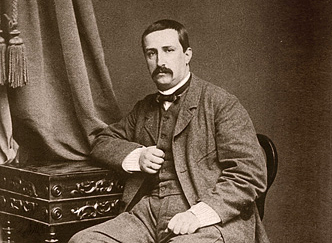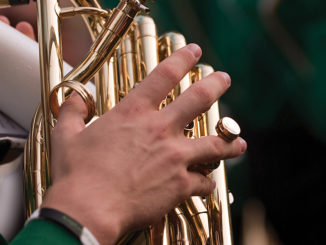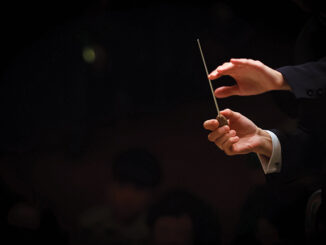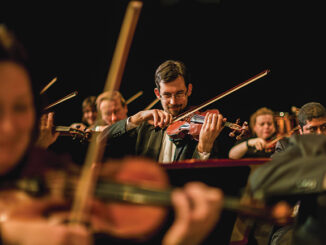
Alexander Porforyevich was born on Nov.12, 1833 as an illegal son of a 62-year-old Georgian nobleman named Luka Stepanovich Gedevanishvili, and a married, intelligent and pretty 25-year-old Russian woman, Evdokia Konstantinovina Antonova.
Fortunately, the Russian nobleman took some thought to the circumstances of the infant’s birth and had his son registered to one of his serfs, Porfiry Borodin. This was a common practice in order to save public embarrassment. (And Alexander Borodin is easier to spell and pronounce.)
There were more fortunate breaks on the way for young Alexander. His “Georgian father” emancipated Alexander from serfdom when he was seven, and provided housing and spending money for him and his mother. Alexander called her his “aunt”.
Alexander and “Aunt” grew up in a huge (some might call it monstrous) four-story house that was gifted to them by their generous Georgian provider. But it was another story when it came to accessible education. His birth registration prevented him from enrollment in a “proper gymnasium” (school). To the rescue comes Luka the Georgian “father.” He made sure that his young “son” received a sound education “in all of the subjects” through private tutors at home. Alexander Borodin was home-schooled.
Alexander’s teenage years were fairly equally divided between science and music. He was boning up for a professorship in chemistry in St. Petersburg at the prestigious Imperial Medical-Surgical Academy. He spent the remainder of his time in research, lecturing and overseeing the education of others. Eventually, in 1872, Borodin established medical courses for women, considered a significant pioneering effort back then. In what spare moments were found, Borodin played the cello.
Borodin gained considerable world renown as a chemist, having won numerous awards and citations. He considered music to be just an avocation, yet we remember him for all those timeless tunes. For a single example, it was 1955 when Howard Keel first took the stage to sing “The Sands of Time,” one of a dozen melodies all “borrowed” from a Borodin symphony or quartet to mold the musical platform for what was called “the best-sung Broadway musical ever” – “Kismet”. Dolores Gray and Ann Blythe captivated us teenagers.
“Who wrote that music?” many of us wondered. Vic Damone also starred in the show, causing the girls to “swoon.” That was 65 years ago when Broadway musicals could hold most high school kids spellbound. “Stranger in Paradise.” “And This Is My Beloved.” “Baubles, Bangles and Beads” and the list of “Kismet” hits goes on.
The website “Classics FM” tells us that Borodin’s music avocation began at full-tilt in 1862 when, with chemistry commanding most of his time and focus, he met the imminent Russian composer Mily Balakirev, one of the founding fathers of modern Russian music. While under Balakirev’s part-time tutelage in composition, Borodin began work on his Symphony No. 1 in E-flat. This was a remarkable feat for a part-timer who was building a career in chemistry. He also began composing what was to become his Symphony No. 2 in B. It was during this time that Borodin had also struck up a lasting friendship with the young firebrand composer Modest Mussorgsky, whose melodic style was to have a lasting effect. Borodin had become a member of “The Russian Five.” In addition to Borodin, Balakirev and Mussorgsky, the group included Nicolai Rimsky-Korsakov and Cesar Cui.
Alexander’s next new acquaintance of note is Ekaterina Protopopova, a brilliant 29-year-old piano virtuoso who effectively turned his life around. So even with all the chemistry and scientific research, music was always hovering in the background. Those initial contacts in 1862 helped spark Borodin’s creative genius.
In 1868 Borodin became distracted with work on his Second Symphony by preoccupation with his opera “Prince Igor,” considered by many to be his most significant work and one of the most important Russian historical operas. It contains the “Polovtsian Dances,” which we frequently hear during pops programs and as stand-alone concert works – probably Borodin’s most popular piece. He left the opera (and a few other compositions) unfinished at his death.
“Prince Igor” was completed posthumously by the great (Russian) composers Rimsky-Korsakov and Glazunov. It is set in the 12th century, when the Russians, commanded by Prince Igor, determined to conquer the barbarous Polovtsians by traveling eastward across the Steppes. The Polovtsians were apparently a nomadic tribe originally of Turkish origin who made an annoying habit of attacking southern Russia.
A full solar eclipse early during the first act foreshadows an ominous outcome to the invasion. Prince Igor’s troops are defeated. The story tells of the capture of Prince Igor, and his son, Vladimir, by Polovtsian chief Khan Konchak, who entertains his prisoners lavishly and orders his slaves to perform the famous “Polovtsian Dances,” providing a stunning climax to the second act.
The second half of the opera finds Prince Igor returning to his homeland. Rather than finding himself in disgrace, he is welcomed home by the townspeople and his wife. Although for a while rarely performed to the final curtain (finished by his musical colleagues Rimsky-Korsakov and Glazunov) outside of Russia, “Prince Igor” in its entirety was mounted by the Metropolitan Opera in New York City in 2014.
Borodin’s musical avocation continued with the beginning of his First String Quartet in 1876. The work demonstrates his mastery of the string quartet form. His familiar Second String Quartet, written in 1881, shows strong lyricism, as in the third movement’s popular “Nocturne.”
At the height of his musical popularity among fellow composers and audiences alike, Borodin created his poetic tone poem “In the Steppes of Central Asia,” yet another hands-down concert favorite. There was talk of a Third Symphony, but time was short. There were so many projects to work on. But Alexander Borodin’s life story ends as abruptly as this article does. On the night of February 27, 1882, he attended a party, no doubt in a jovial mood. Then, just after midnight, he collapsed from a massive coronary.
There were numerous works, many of them melodic masterpieces in the making, including two operas – “The Tzar’s Bride” and a farce called “”The Heroic Warriors.” There is a trove of unfinished or unpublished chamber pieces scored to compliment various combinations of instruments. And there is the unfinished Third Symphony.
Not bad for a man who turned to music “never more than to relax from chemistry,” as Alexander Borodin once put it.
-by Lee Stott
About the Author: Lee Stott is retired from WKU Public Radio, lives near Franklin with his daughter Cindy Wade’s family and has 30 grandchildren and seven great-grandchildren.







